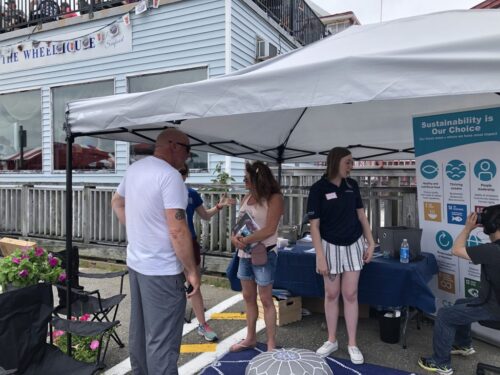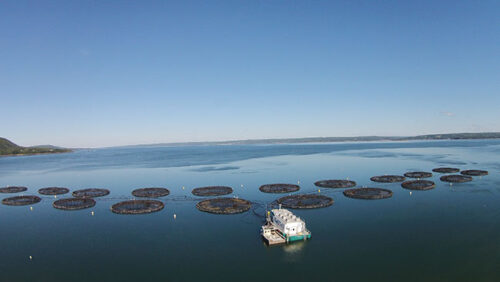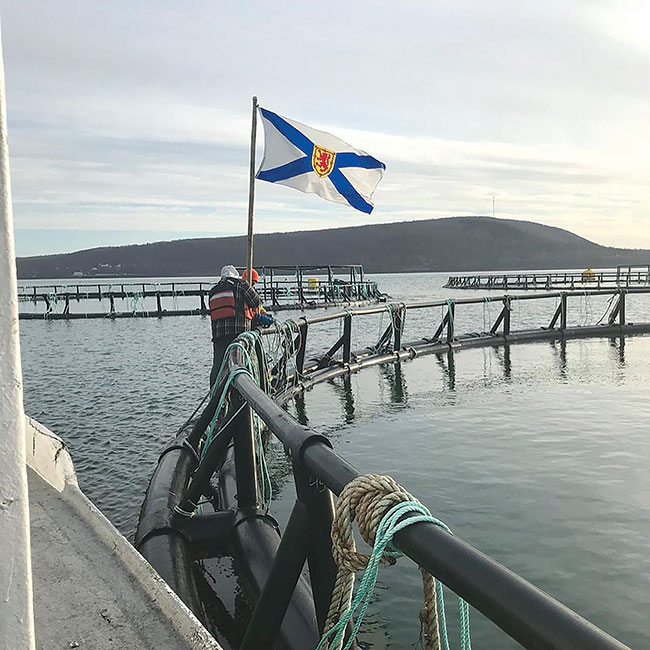Efforts to revamp aquaculture regulations in Nova Scotia could result to the adoption of a scheme akin to Norway’s traffic-light system where coastal areas are mapped out according to their suitability to finfish farming.
One of the criticisms about the current regulations is the power that ministers have in declaring which areas are open for finfish farming. The regulations were put in place in 2015.
Minister of Fisheries and Aquaculture for Nova Scotia Steve Craig, who came into office in 2021, is looking at implementing a licensing process that “places much weight on environmental considerations,” including rating the province’s coastal areas as green, yellow or red according to their suitability to finfish aquaculture.
The addition of coastal mapping was a key recommendation in 2015 by Dalhousie University law professors William Lahey and Meinhard Doelle, co-architects of the current regulations.
“The framework we proposed has never been fully implemented; specifically the coastal zoning we proposed, it has not been done,” Lahey told SalmonBusiness in an email.
Lahey welcomes the current move to review the regulations. “If this review is the one we proposed, I have to think it should happen,” he said.
The move to revamp the province’s regulations follows the recent installation of the Nova Scotia Aquaculture Review Board (ARB), a regulatory body which reviews applications and makes recommendations. The fisheries department issues or denies licenses based on ARB’s decision.
Will big players come?
But it may take more than new regulations to attract salmon producers interested in building a sizable operation in the province. Nova Scotia doesn’t have broad areas conducive to salmon farming; instead, it has “pockets”, in areas such as Digby; St Mary’s Bay; and Shelburne.
The geographical distance between these pockets is double-edged: it means diseases or sea lice are contained, but it also means there’s limited areas for growth.
Cermaq Canada cited this when it decided to abandon its plan to expand its operations into Nova Scotia in April 2020.

Photo: Cermaq
“We knew that we would need to identify between 15 and 20 viable farm sites spread throughout the four option areas in order to achieve the required annual production. Unfortunately, we were unable to locate enough sites at this time, and have made the decision to allow all of our Options to Lease to expire,” David Kiemele, managing director for Cermaq Canada, said at the time.
A much smaller operation is looking at building farms in the province. It is believed to be looking at the same sites that Cermaq considered earlier. The company, Norwegian-owned Canadian Salmon Ltd, was given this past June the option to explore sites in St Mary’s Bay in Digby County, where it plans to operate four marine cage fish farms.

Nova Scotia has 235 marine and land-based aquaculture sites. Cooke Aquaculture subsidiary Kelly Cove Salmon is the province’s only Atlantic salmon farmer. It operates 14 sites.
Powerful lobster lobby
Lobster is Nova Scotia’s most valuable seafood export, and along with it comes a powerful lobby group.
“Nova Scotia is not easy to get into,” says an industry insider. “In Nova Scotia, the thing to consider is that lobster is king, so any threat to the lobster fishery, or even a perceived threat to the lobster fishery, is not welcome. It really carries all the power and there are a lot of lobster fishermen. The province has the largest lobster fishing fleet in the world.”
An eight-year study that looked at the impact of a salmon farm in New Brunswick on local wild lobster population found that salmon farms can coexist with the lobster population without any negative impact. Study lead Sweeney International, a marine environmental management company based in New Brunswick, found there was no change in lobster abundance, in fact, lobster counts within the lease and outside of the lease increased over time.
“We have been told by divers and lobster fishermen that some of their best catches are around our salmon farms,” says Joel Richardson, VP of Public Relations at Cooke Inc. “In some benthic areas the farms actually provide shelter, high water flow, nutrients, etc. Many farms have traps all around the cage perimeter inside our lease. And we’re okay with that. Our farmers and vessel crews do a great job of avoiding trap lines.”
Nova Scotia also has a large opposition group and First Nation groups that aren’t necessarily against aquaculture but they certainly want to be informed and want to have their say, the insider added.
Growing support
The good news, though, is that aquaculture is gaining support among the local population. In an opinion poll conducted between November and December 2021, the 400 Nova Scotian adults surveyed see the industry as having positive impacts on the economy, employment, and local food supply.
The aquaculture industry employs 900 people and contributes $90 million (US$70.5 million) per year to the Nova Scotian economy.
Meanwhile, the provincial government is calling on the local community to participate in the review process underway. Changes to legislation and regulations are expected to be finished in 2023 or 2024.

